2025-07-10
Wildlife in the Costa Rica Rainforest: 5 Animals to See and Where to Spot Them
Discover the abundant Costa Rica wildlife that calls the rainforest home. Five iconic Costa Rica animals and tips for wildlife watching.
 954-694-6479
954-694-6479Summary:
- Many different butterflies can be found in Costa Rica, but the blue morpho butterfly stands out as an icon of rainforest wildlife.
- The rainforest is home to several different species of monkeys. Perhaps the most famous is the playful yet intelligent white-throated capuchin.
- Costa Rica's rainforest is inhabited by some of the most famous tropical birds, including the keel-billed toucan.
- The rainforest is the perfect habitat for a variety of colorful frogs, thanks to its humid conditions. One of the animals most strongly associated with Costa Rica's rainforest is the red-eyed tree frog.
- Costa Rica can also be a great place to see sloths, especially the brown-throated sloth.
5 Must-See Animals of the Costa Rica Rainforest
Home to over 500,000 species, Costa Rica is one of the most biodiverse places on Earth. No matter where your travels take you, the country’s wildlife adds a sense of wonder to every journey. But for the richest animal encounters, the rainforests of Costa Rica are truly unmatched. The natural abundance of this biome attracts many visitors hoping to catch a glimpse of nature in action.
If you’re wondering where to start, we’ve got you covered. Below, we’ve highlighted five of the most incredible rainforest animals to keep an eye out for (many of which can be seen right here at Vajra Jahra Retreat Center), along with tips on how to spot them in the wild.
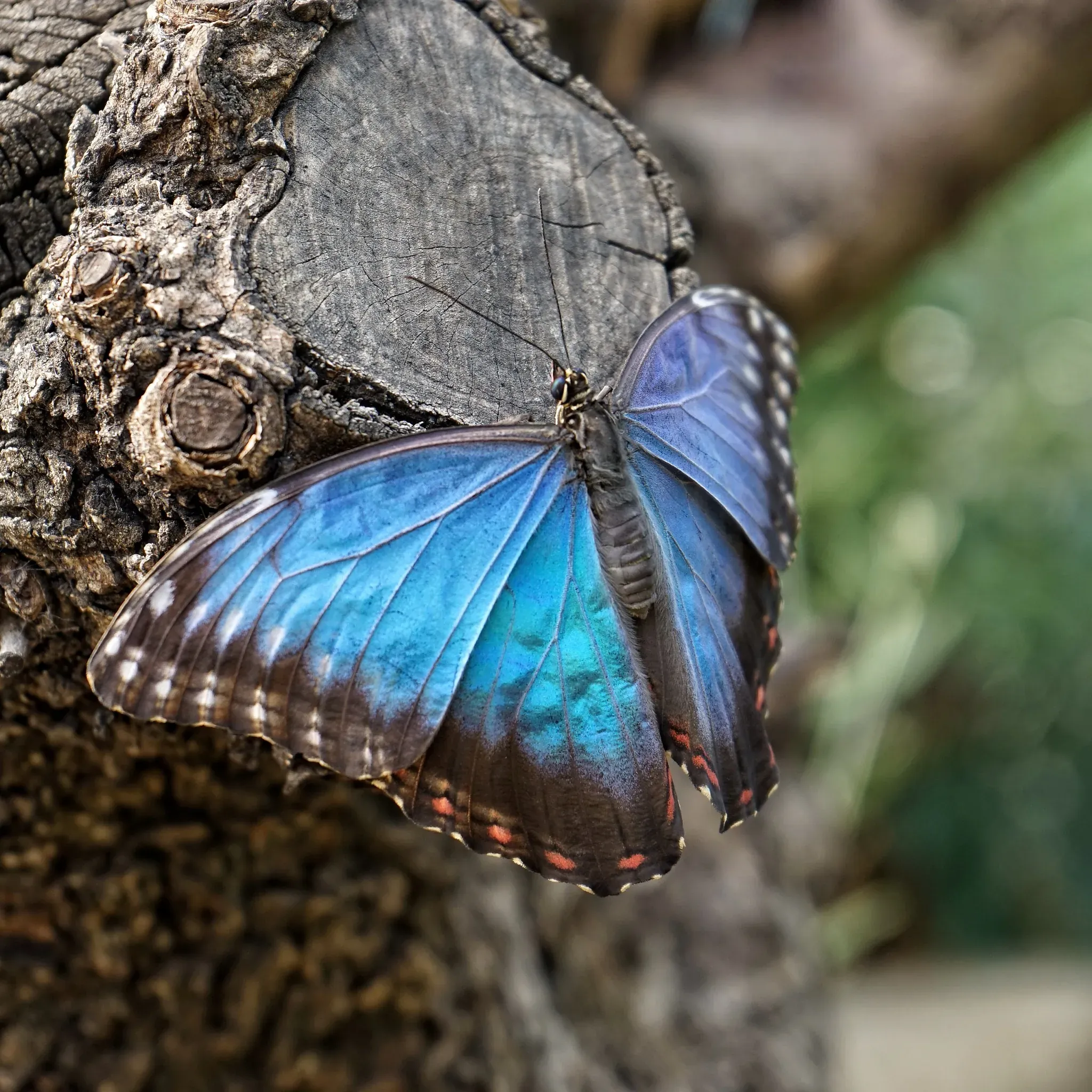
#1. Blue Morpho Butterfly
While there are countless butterfly species to be found in Costa Rica, one of the most popular has to be Morpho peleides, the blue morpho butterfly. With a wingspan of five to eight inches, this graceful blue pollinator is one of the largest butterfly species in the world.
Its brilliant blue wings flash brightly in the sunlight, but there’s a hidden side (literally!). The underside of the wings is a muted brown, creating a captivating effect if you see one in flight, as the vibrant blue dances in and out of sight.
Where to Spot Them
Your best chances of spotting a blue morpho butterfly are in open clearings, along riverbanks, or near forest streams. They are most active during the early to mid-morning hours, when the sun highlights their vibrant wings as they move from place to place. Keep your eyes peeled for a sudden flash of blue among the greenery.
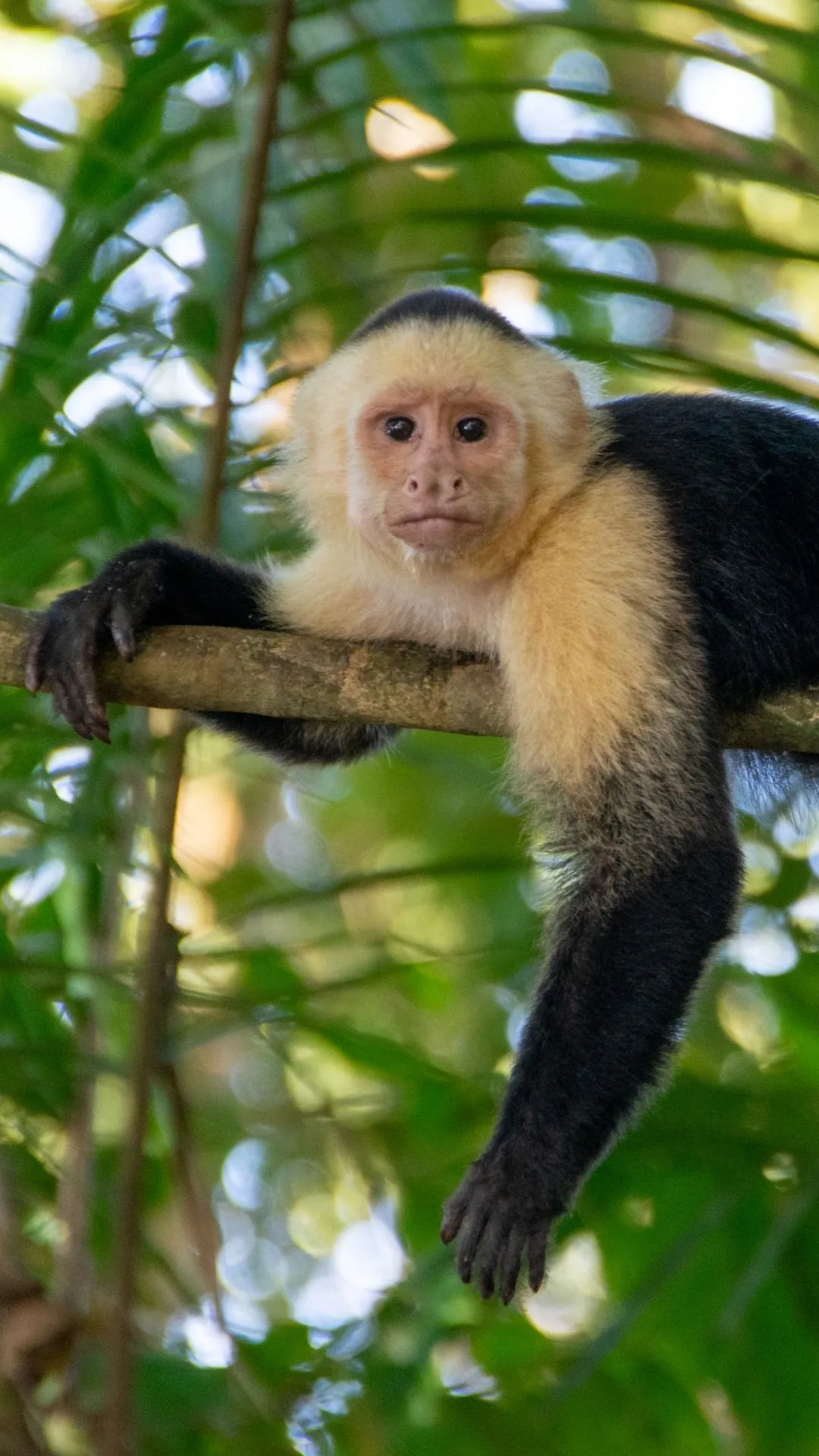
#2. Panamanian White-Throated Capuchin
With signature black-and-white fur and an adorable face, the Panamanian white-throated capuchin (Cebus imitator) is a true must-see monkey. These rainforest-dwellers are highly adaptable and particularly intelligent, allowing them to thrive in their natural habitat.
Due to their cleverness and ability to adapt to different environments, these capuchins have successfully been trained for a variety of roles, including starring in Hollywood films. However, it should be noted that the ethics of these practices have since been called into question. It’s crucial that these monkeys continue to thrive in their natural environment, as they are currently classified as a vulnerable species.
Where to Spot Them
Capuchins are diurnal (active during the day) and spend most of their time in the trees. While in the rainforest during the day, keep an eye out for movement in the trees.
Despite the resilience of many primates, monkey populations have seen notable decreases in Costa Rica since the 1990s, emphasizing the importance of environmentally conscious travel. These monkeys can be a delight to watch if you come across them—just be sure to respect their personal space and view from a safe distance.
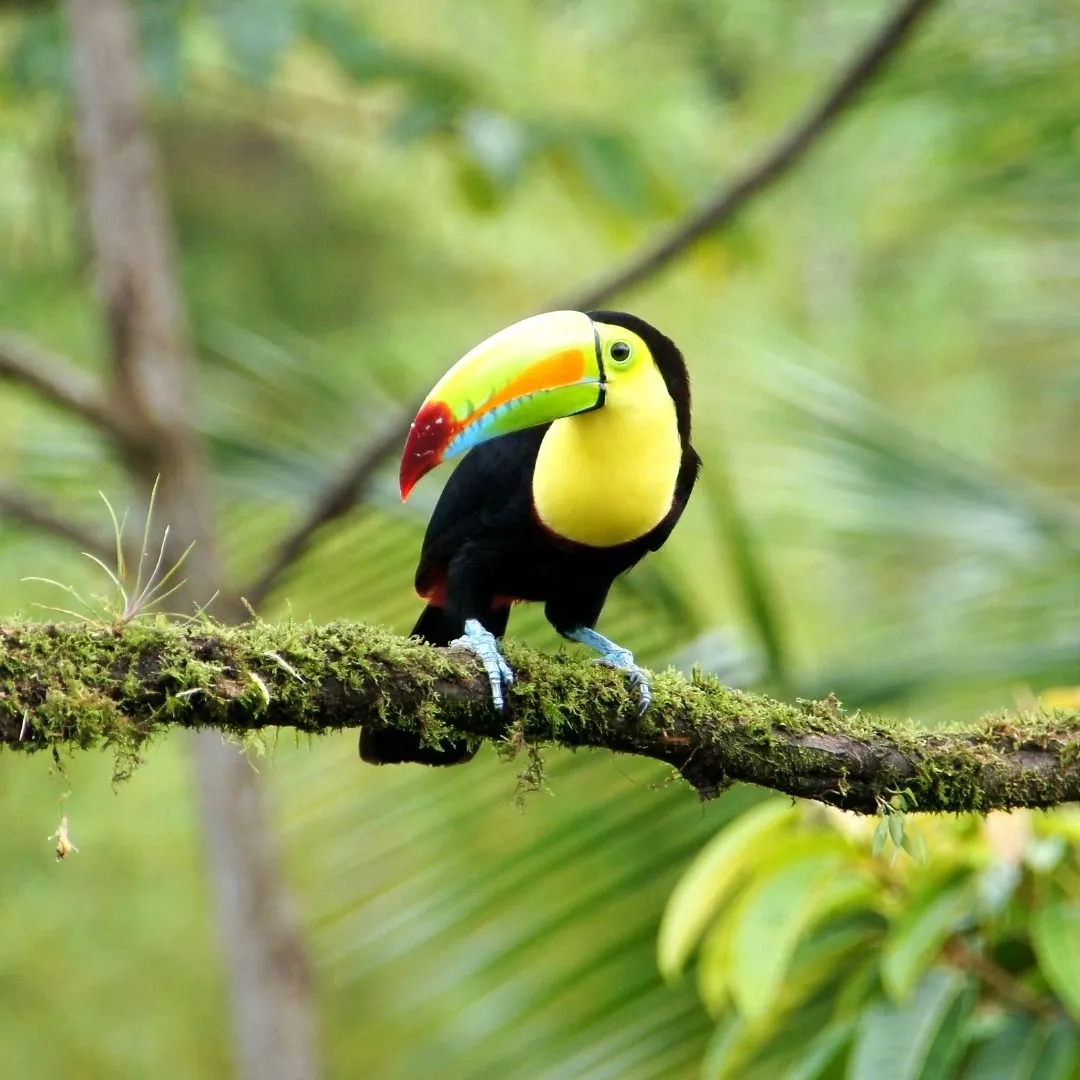
#3. Keel-Billed Toucan
When it comes to birds of the rainforest, the keel-billed toucan (Ramphastos sulfuratus) is likely one of the first that many people envision. Between their multicolored beaks and bright yellow bibs, these toucans are sure to stand out wherever they’re seen.
The keel-billed toucan’s large, vibrant bill isn’t just for show, however. The beak’s length and dexterity allow it to efficiently forage for fruit, insects, and other delicacies in hard-to-reach places, like tree hollows or crevices. In addition to using their bills for social behaviors like playing and wrestling, these toucans can even use fine blood vessels in their bills to more effectively regulate their body temperature.
Where to Spot Them
The first place to look for toucans is up. They spend most of their time high in tree canopies, rarely heading lower. Those familiar with toucans may be able to locate them by listening for their distinctive cry, which has been compared to the sound of frogs croaking. Keel-billed toucans are also highly social and are often found in flocks, making them easier to spot.
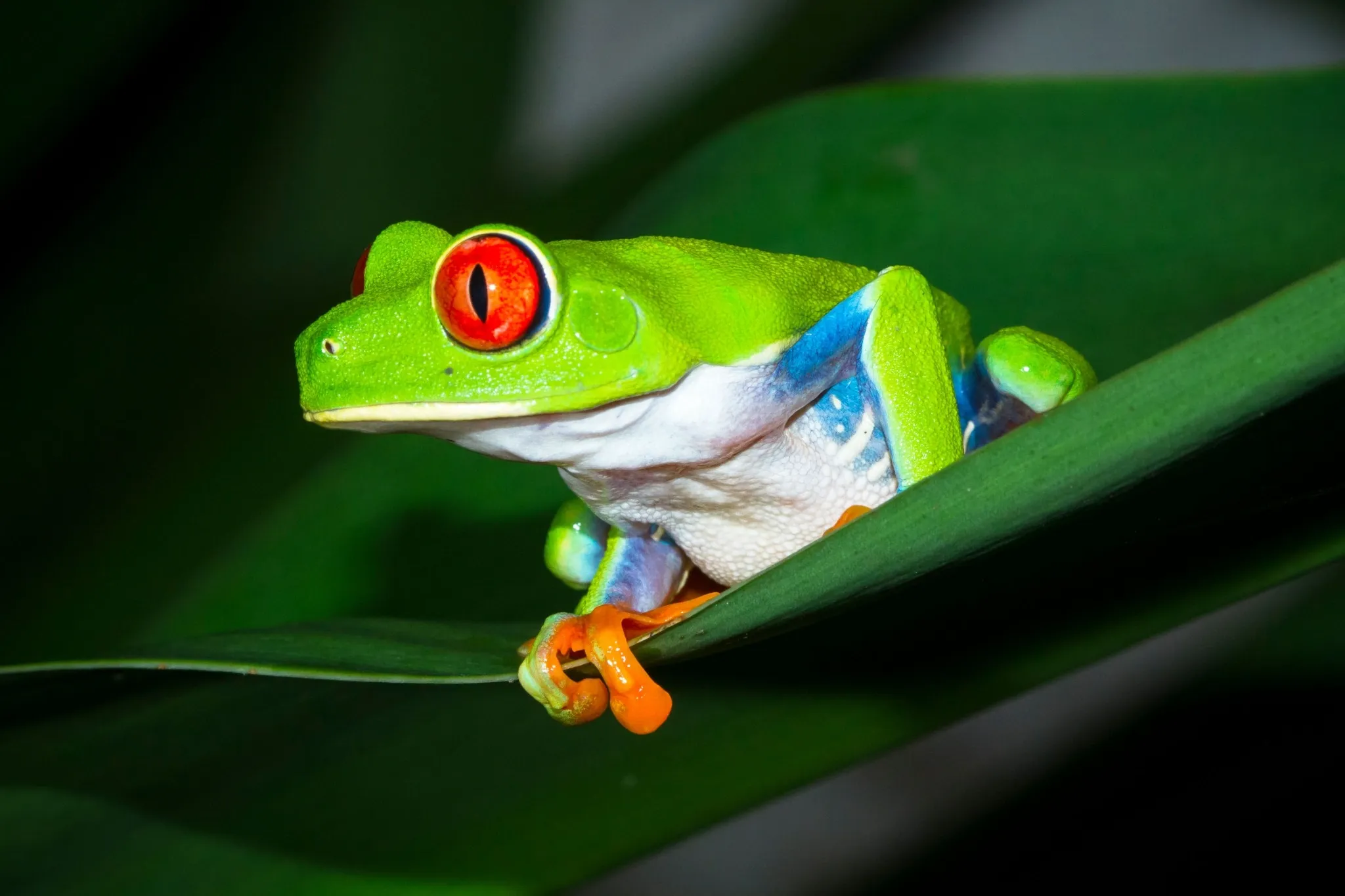
#4. Red-Eyed Tree Frog
Not unlike the many-colored birds we just discussed, the next animal on our list is also brightly colored and an iconic symbol of Costa Rica: the red-eyed tree frog, or Agalychnis callidryas. These small amphibians make a big impression with the bulging red eyes that give them their name.
You can also pick out these frogs by their lime green, blue, and yellow skin with red or orange feet. However, they are also known to change colors at times based on their mood, becoming a darker shade of green or even brown.
Where to Spot Them
Red-eyed tree frogs, like other amphibians, rely on a certain amount of moisture. Thus, they can most easily be found in more humid areas, such as near bodies of water. With their sticky footpads, they can easily cling to trees, branches, and even the undersides of leaves. These frogs are pretty small, being under 3 inches long, so you’ll have to look closely.
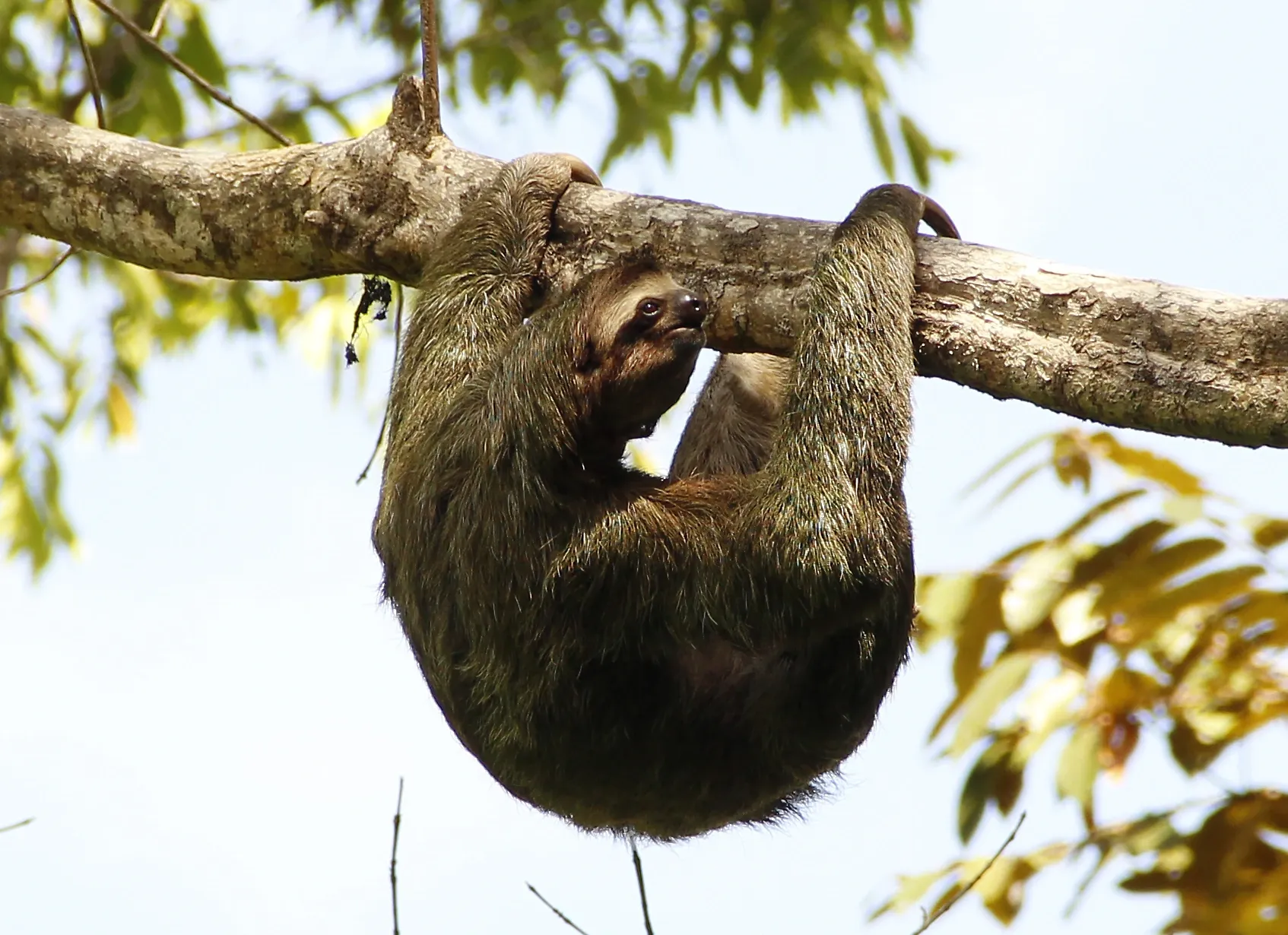
#5. Brown-Throated Sloth
As one of the slowest land mammals in the world, perhaps it is no surprise that the brown-throated sloth (Bradypus variegates) is the last to make its way to our list—however, it is certainly not the least. With long claws, even longer front limbs, and a head that can swivel up to 270 degrees, if you catch a glimpse of one of these creatures, you won’t soon forget it.
Adding to their unusual features is an occasional green tint, caused by algae residing in their fur. This extra coloration may provide the sloth with some camouflage from predators while napping in the treetops. Scientists have also theorized that these algae provide essential nutrients to brown-throated sloths.
The other primary sloth species in Costa Rica is Hoffman’s two-toed Sloth, Choloepus hoffmanni, which is a less common but still fascinating sight. As the name suggests, these sloths have only two claws on their forelimbs, compared to three on that of the brown-throated sloth.
Where to Spot Them
Due to their slow-moving nature, one might think it’d be easy to catch a sloth in action. But as prey for a variety of creatures in the rainforest, these climbers know to stay high up and out of sight when possible. They’ll occasionally lower themselves to the ground for short periods of time, but otherwise spend their days relaxing in the forks of tree branches or even hanging upside-down from the branches themselves.
While sloths are relatively common in Costa Rica, they can be hard to spot due to their tendency towards isolation. If you are especially interested in seeing sloths during your visit, you may want to plan a trip to one of several sloth sanctuaries in Costa Rica, removing the element of unpredictability.
It Doesn't Stop There
There is a wealth of life to discover in Costa Rica, and we’ve barely scratched the surface in this list. You can see plenty of other wildlife in Costa Rica’s rainforest, such as bats and tapirs. In addition to capuchins and toucans, you can often find howler monkeys and macaws in the treetops. Several species of wild cats also inhabit this region, including jaguars, pumas, ocelots, margays, and more. If you leave the rainforest and head to the ocean, you may even get the chance to spot green sea turtles or humpback whales, depending on the time of year.
Wildlife Watching in Costa Rica: 3 Steps to Success
When seeking out wildlife in Costa Rica, there are a few key points to keep in mind:
- Be informed. It’s a good idea to find out more about the types of animals you want to see before you go. Research the best places and times to see them to get the most out of your trip. If you’re taking part in any tours or other sightseeing experiences, we also recommend looking them up ahead of time to make sure that they are environmentally conscious.
- Be respectful. Costa Rica has 170 protected areas, reflecting a commitment to preserving the gorgeous natural landscape and its abundance of living things. Always be mindful of your environment, especially if visiting a protected area.
- Be safe. Even animals that seem docile can be dangerous when encountered in the wild. Maintain a safe and respectful distance to avoid disturbing the animals in their natural habitat.
Vajra Jahra: Your Key to the Costa Rica Rainforest
Wildlife tours of the rainforest can be a great opportunity to see animals, but they only last so long. Why not immerse yourself in the natural landscape at Vajra Jahra?
Many of these animals can be seen or heard right on the property. With cozy modern villas nestled in the lush rainforest of the Diamante Valley, our retreat property is the perfect place to stay if you’re hoping to see Costa Rica wildlife. Just imagine watching the animals of the Costa Rican rainforest right in your front yard.
Looking for more? We also offer logistical support to help you plan excursions in and out of the rainforest, so you can get the best of all the nation has to offer. Whether you’re looking to host a retreat or just book a relaxing stay, we’re here to support you every step of the way. To start planning your Costa Rica wildlife watching experience, contact us today, or visit our location page to learn more about the property. We look forward to welcoming you into the rainforest soon.
Recent Posts

A Retreat for Everyone: Exploring Different Types of Retreats
Unpacking 4 major types of retreats, what to expect, & tips to make it a memorable experience.

What Does It Mean to Align Your Chakras?
An introduction to aligning chakras: meaning, history, & benefits.

The Eight Limbs of Yoga: Practicing Yoga Every Day
Exploring the eight limbs of yoga, as found in the yoga sutras, and how to apply them to your practice.
See the Wildlife of Costa Rica
With comfortable, modern facilities in the simplicity of nature, Vajra Jahra Retreat Center is the perfect way to immerse yourself in the natural environment of Costa Rica's rainforest.
Get Started Get Started
Get Started